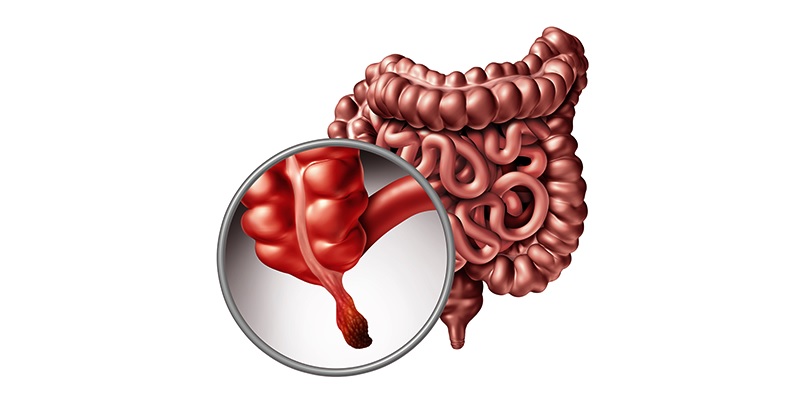
appendicitis
Appendicitis is a common yet potentially serious medical condition that affects millions of people worldwide. This article delves into the essential aspects of appendicitis, from its causes and symptoms to its diagnosis, treatment, and preventive measures. Whether you’re looking for detailed information or general insights, this guide has you covered.
Table of Contents
What is Appendicitis?
Appendicitis is an inflammation of the appendix, a small, finger-shaped pouch connected to the large intestine. While the appendix’s function in the human body remains unclear, it is believed to play a role in gut immunity.
When inflamed or infected, the appendix can cause severe abdominal pain and may require urgent medical attention. If left untreated, it can rupture, leading to life-threatening complications.
Symptoms of Appendicitis
Common Symptoms
Appendicitis symptoms can vary, but the most typical signs include:
- Severe abdominal pain: Often starts near the navel and shifts to the lower right abdomen.
- Nausea and vomiting: Commonly follow the onset of pain.
- Loss of appetite: A sudden aversion to food.
- Fever: Usually mild but can escalate as the condition worsens.
- Swelling in the abdomen: May indicate advanced inflammation.
Less Common Symptoms
- Pain during urination.
- Diarrhea or constipation.
- Gas or bloating.
If you experience these symptoms, particularly persistent abdominal pain, seek medical attention immediately.
Causes of Appendicitis
Obstruction
One of the primary causes of appendicitis is an obstruction in the appendix. This can occur due to:
- Hardened stool (fecalith).
- Enlarged lymphoid follicles.
- Tumors or growths.
Infection
Bacterial or viral infections can cause inflammation of the appendix. Common infections linked to appendicitis include:
- Gastrointestinal infections.
- Respiratory infections that spread to the abdomen.
Risk Factors
While appendicitis can affect anyone, the following factors increase the risk:
- Age: Most common in people aged 10-30.
- Family history: A genetic predisposition may exist.
- Diet: Low-fiber diets may contribute to blockage.
How is Appendicitis Diagnosed?
Physical Examination
Doctors typically start with a physical exam to assess pain in the lower right abdomen. Rebound tenderness (pain upon releasing pressure) is a key indicator.
Diagnostic Tests
To confirm appendicitis, the following tests may be conducted:
- Blood tests: Check for elevated white blood cells, indicating infection.
- Urinalysis: Rules out urinary tract infections or kidney stones.
- Imaging tests: Ultrasound, CT scans, or MRI can detect inflammation or rupture.
Differential Diagnosis
Symptoms of appendicitis can mimic other conditions, such as:
- Gastroenteritis.
- Ovarian cysts.
- Crohn’s disease.
- Urinary tract infections.
Accurate diagnosis is critical to avoid complications.
Treatment Options for Appendicitis
Appendectomy: The Standard Treatment
The most common and effective treatment for appendicitis is surgical removal of the appendix, known as an appendectomy. This procedure can be performed in two ways:
- Laparoscopic surgery: Minimally invasive and allows faster recovery.
- Open surgery: Used in cases of rupture or extensive infection.
Non-Surgical Treatments
In specific cases, especially mild appendicitis, antibiotics may be prescribed to reduce inflammation. However, this is generally a temporary measure, and surgery is often recommended eventually.
Complications of Untreated Appendicitis
Failure to treat appendicitis can lead to severe complications, including:
- Ruptured appendix: Releases bacteria and pus into the abdomen, causing peritonitis.
- Abscess formation: Pockets of infection may develop around the appendix.
- Sepsis: A life-threatening systemic infection.
Prompt medical intervention is vital to prevent these outcomes.
Recovery After Appendicitis Surgery
Hospital Stay
Most patients undergoing laparoscopic surgery are discharged within 1-2 days, while open surgery may require a longer stay.
Post-Surgery Care
- Dietary changes: Start with liquids and gradually reintroduce solid foods.
- Pain management: Prescribed medications help manage post-operative pain.
- Activity restrictions: Avoid strenuous activities for a few weeks.
Long-Term Outlook
The appendix’s removal does not cause long-term health issues. Most patients recover fully and lead normal lives.
Can Appendicitis Be Prevented?
Lifestyle Modifications
While there is no guaranteed way to prevent appendicitis, adopting a healthy lifestyle may reduce the risk:
- Eat a high-fiber diet: Include fruits, vegetables, and whole grains to prevent constipation.
- Stay hydrated: Drink plenty of water to support digestive health.
Regular Checkups
Early detection of digestive issues can help mitigate potential risks associated with appendicitis.
Appendicitis in Children and Older Adults
Appendicitis in Children
Children often struggle to articulate their symptoms, making diagnosis challenging. Parents should watch for:
- Persistent abdominal pain.
- Unexplained fever or vomiting.
Appendicitis in Older Adults
Older adults may experience milder symptoms, leading to delayed diagnosis. This increases the risk of complications such as rupture.
Appendicitis Statistics and Facts
- Appendicitis is the most common abdominal emergency worldwide.
- About 7% of the global population experiences appendicitis in their lifetime.
- Laparoscopic appendectomy has a 95% success rate with minimal complications.
Myths and Misconceptions About Appendicitis
Myth 1: Spicy Foods Cause Appendicitis
While spicy foods can irritate the stomach, they do not cause appendicitis.
Myth 2: You Cannot Live Without Your Appendix
The appendix has no essential function in modern humans, and its removal does not affect long-term health.
Myth 3: Appendicitis Only Affects Young People
While it is more common in younger individuals, appendicitis can occur at any age.
When to See a Doctor
Seek immediate medical attention if you experience:
- Sudden, severe abdominal pain.
- Nausea or vomiting that worsens over time.
- Persistent fever and abdominal tenderness.
Early diagnosis and treatment are crucial to avoid complications.
Conclusion
Appendicitis is a manageable condition when diagnosed and treated promptly. Understanding its symptoms, causes, and treatment options can help you respond effectively and ensure a quick recovery. If you or a loved one experiences signs of appendicitis, don’t hesitate to consult a healthcare professional. Early action can save lives and prevent complications.
By staying informed and adopting a healthy lifestyle, you can reduce the risks associated with appendicitis and ensure overall digestive health.



